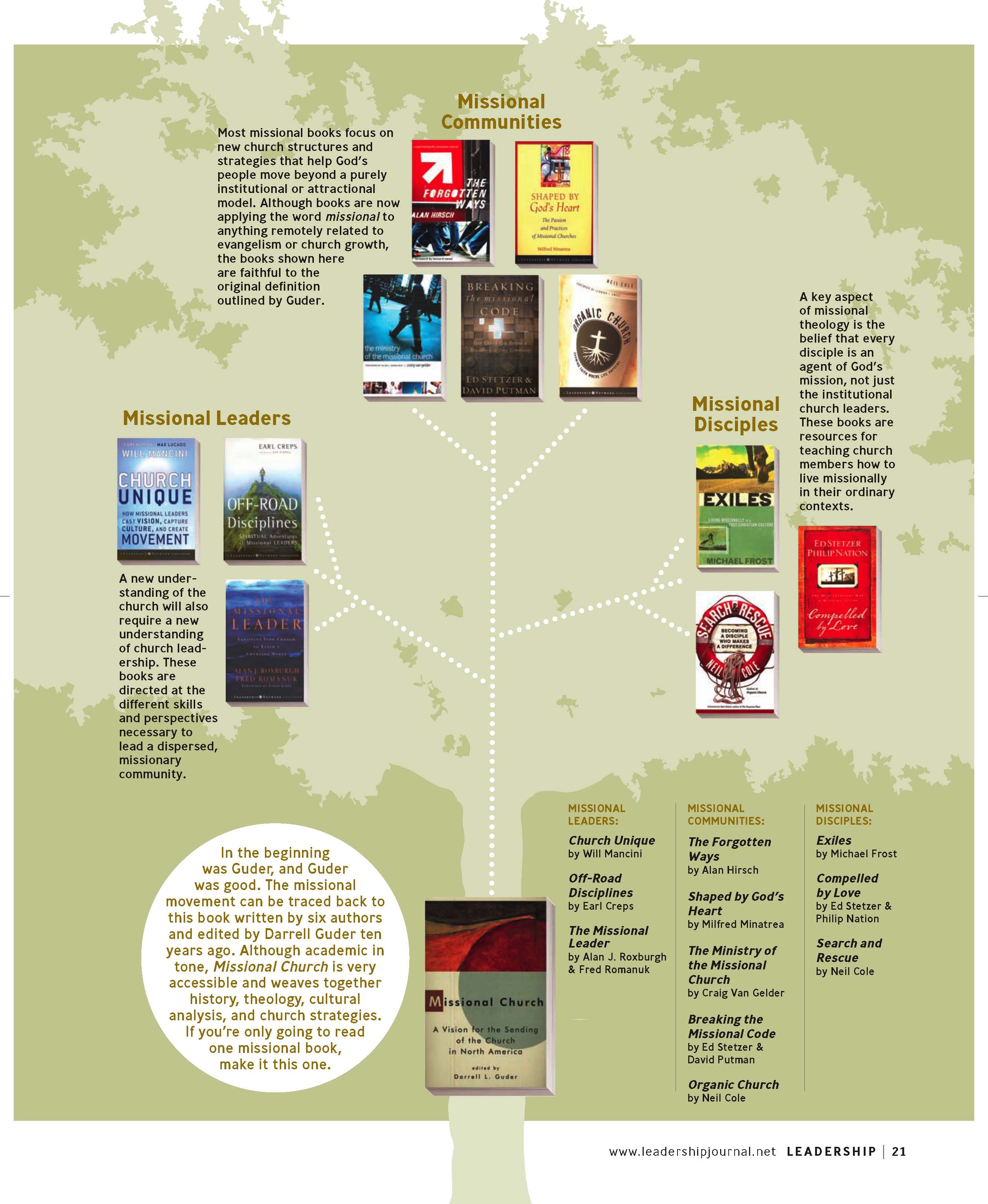A funny, yet very practical tidbit on evangelism from The Resurgence. This captures the main idea of of externally focused, gospel driven community:
Category: missional
This image from The Forgotten Ways has a great breakdown of some authors who have influenced my thinking.
From: the missional family tree according to leadership journal : The Forgotten Ways.
unChristian 6
The thesis of Chapter 6 is that Christians must move from being perceived as naive and disengaged (“Sheltered” is the title of the chapter) to informed and involved with sophisticated nuance. The creation of Christian subculture has done great damage to the overall integration within the culture at large, and therefore diminished influence and the capacity to speak into the lives of those around us.
Quotes:
- “Most young outsiders…see following Christ as something like belonging to a social club that adheres to a nice set of principles” ~Page 124
I would say that this is the single largest threat to the bride of Christ in this generation. Predominantly the previous generation of churches have cultivated a country club mentality of leisure under the guise of “community” without calling believers to walk the hard road of discipleship into mission. The great joy, however, is seeing our generation respond to the challenge and desire earnestly to engage the global mission of God and share the gospel of the kingdom.
- “Currently more that one-third of children born in the United States are born to unmarried mothers” ~Page 127
This is an absolutely staggering statistic. Through ministry to high school students while I was in college, a simple non-scientific poll showed that over 50% of the students I was reaching out to were from broken homes. This truly is a fatherless generation in desperate need of Godly leadership from men.Ministry to young men is the single most important part of what I am called to in Austin, and I pray that God would raise up men.
- “One thing that prevents us from engaging the world is the fact that our connection with outsiders dissipates as we enter the Christian enclave” ~Page 130
Yup.
- “If we allow the actions and attitudes of outsiders to shock us, we become either isolationists or crusaders, and neither extreme will have much influence on outsiders” ~Page 131
The true nature of the unbeliever is hell bent toward sin, and we ought not to react with surprise and contempt when we see that true nature come forth. As our culture continues forward without the knowledge of a great and glorious God, we should not adopt a Chicken Little, the sky is falling posture, but instead plead with God to change hearts that new culture might flow from the broken and contrite heart.
- “When people say that America is a mission field, it would be more accurate to say it is many diverse mission fields.” ~Page 134
I have thought long and hard on this particular question, and am still continually perplexed by the idea of a people group in an American/Western context. How can such an individualistic society be understood through this basic missiological lens. I often wonder if the success of mega and micro churches in our context is because of their ability to recreate strong social fabric that most medium sized churches cannot match (mega has a high level of specialization and deep resources, and micro naturally develops intimate community).
The main usefulness of this chapter is for an older generation to begin to comprehend and reach down to a younger. Older church leaders would benefit from not only reading, but actually digesting this material as they seek to engage a younger generation and exegete its culture. I think many young believers hunger for a different expression of Christianity than the glorified country clubs of most suburban churches, and it will require a significant adaptation in order to leverage the older generation effectively in the mission of God to the younger.
This blog articulates well the idea of mission as central to small group and church sustainability. I consistently wrestle with the concept of assimilation into mission rather than ministry, and the most effective means to accomplish this end.
I’m not sure I’m ready to abandon wholesale assimilation to ministry as a pathway to mission as Hirsch suggests (this is the route that I took, as well as many missional practitioners that I know), but the principle is important to understand.
Sustainability in community is driven by the size of the mission and vision. Groups that are internally focused tend to turn on themselves, and ultimately die. This creates an approximately 2 year life cycle of small groups, which is pretty standard lifetime for assimilation based churches. Once your means of attraction becomes outdated or fails to adapt, thus drying up your source of new individuals, your church is essentially doomed to die.
Only when small groups catch an initial vision to be externally focused will they endure beyond this life cycle, in my opinion.
Read all of Hirsch’s thoughts here:
